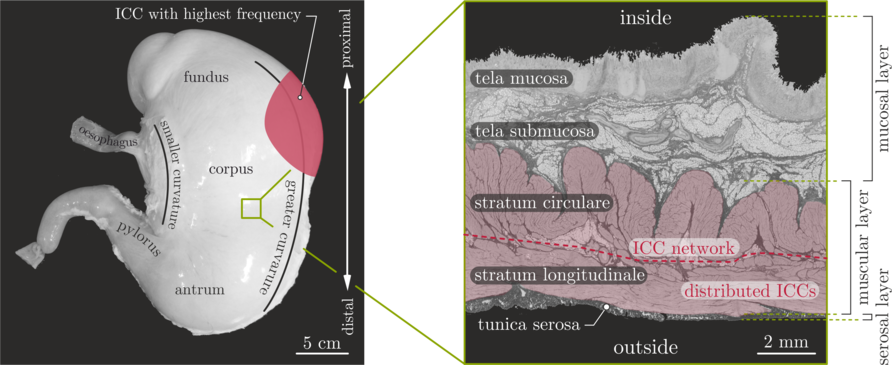The contraction activation of smooth muscle in the stomach wall (SW) is coordinated by slow electrical waves. The interstitial cells of Cajal (ICC), specialised pacemaker cells, initiate and propagate these slow waves. By establishing an electrically coupled network, each ICC adjusts its intrinsic pacing frequency to a single dominant frequency, to be a key aspect in modelling the electrophysiology of gastric tissue. In terms of modelling, additional fields associated with electrical activation, such as voltage-dependent calcium influx and the resulting deformation, have hardly been considered so far. Here we present a three-dimensional model of the electro-chemomechanical activation of gastric smooth muscle contractions. To reduce computational costs, an adaptive multi-scale discretisation strategy for the temporal resolution of the electric field is used. The model incorporates a biophysically based model of gastric ICC pacemaker activity that aims to simulate stable entrainment and physiological conduction velocities of the electrical slow waves. Together with the simulation of concomitant gastric contractions and the inclusion of a mechanical feedback mechanism, the model is used to study dysrhythmias of gastric slow waves induced by abnormal stretching of the antral SW. The model is able to predict the formation of stretch-induced gastric arrhythmias, such as the emergence of an ectopic pacemaker in the gastric antrum. The results show that the ectopic event is accompanied by smooth muscle contraction and, although it disrupts the normal propagation pattern of gastric slow electrical waves, it can also catalyse the process of handling indigestible materials that might otherwise injure the gastric SW.
L. Klemm, R. Seydewitz, T. Siebert, M. Böl
Three-dimensional multi-field modelling of gastric arrhythmias and their effects on antral contractions
Computers in Biology and Medicine, 153, 106488, (2023) [Link]

